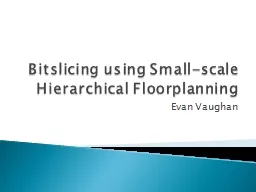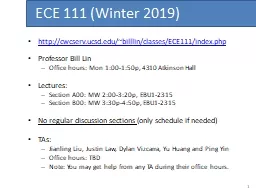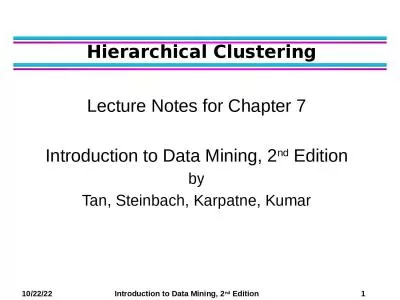PPT-1 COMP541 Hierarchical Design & Verilog
Author : luanne-stotts | Published Date : 2018-03-21
Montek Singh Aug 29 2014 Topics Hierarchical Design Verilog Primer and Advanced 2 Design Hierarchy Just like with large program to design a large chip need hierarchy
Presentation Embed Code
Download Presentation
Download Presentation The PPT/PDF document "1 COMP541 Hierarchical Design & Veri..." is the property of its rightful owner. Permission is granted to download and print the materials on this website for personal, non-commercial use only, and to display it on your personal computer provided you do not modify the materials and that you retain all copyright notices contained in the materials. By downloading content from our website, you accept the terms of this agreement.
1 COMP541 Hierarchical Design & Verilog: Transcript
Download Rules Of Document
"1 COMP541 Hierarchical Design & Verilog"The content belongs to its owner. You may download and print it for personal use, without modification, and keep all copyright notices. By downloading, you agree to these terms.
Related Documents











![[READING BOOK]-Verilog — 2001: A Guide to the New Features of the Verilog® Hardware](https://thumbs.docslides.com/976038/reading-book-verilog-2001-a-guide-to-the-new-features-of-the-verilog-hardware-description-language-the-springer-international-series-in-engineering-and-computer-science-book-652.jpg)
![[FREE]-Verilog — 2001: A Guide to the New Features of the Verilog® Hardware Description](https://thumbs.docslides.com/992340/free-verilog-2001-a-guide-to-the-new-features-of-the-verilog-hardware-description-language-the-springer-international-series-in-engineering-and-computer-science-book-652-6436782d37851.jpg)

